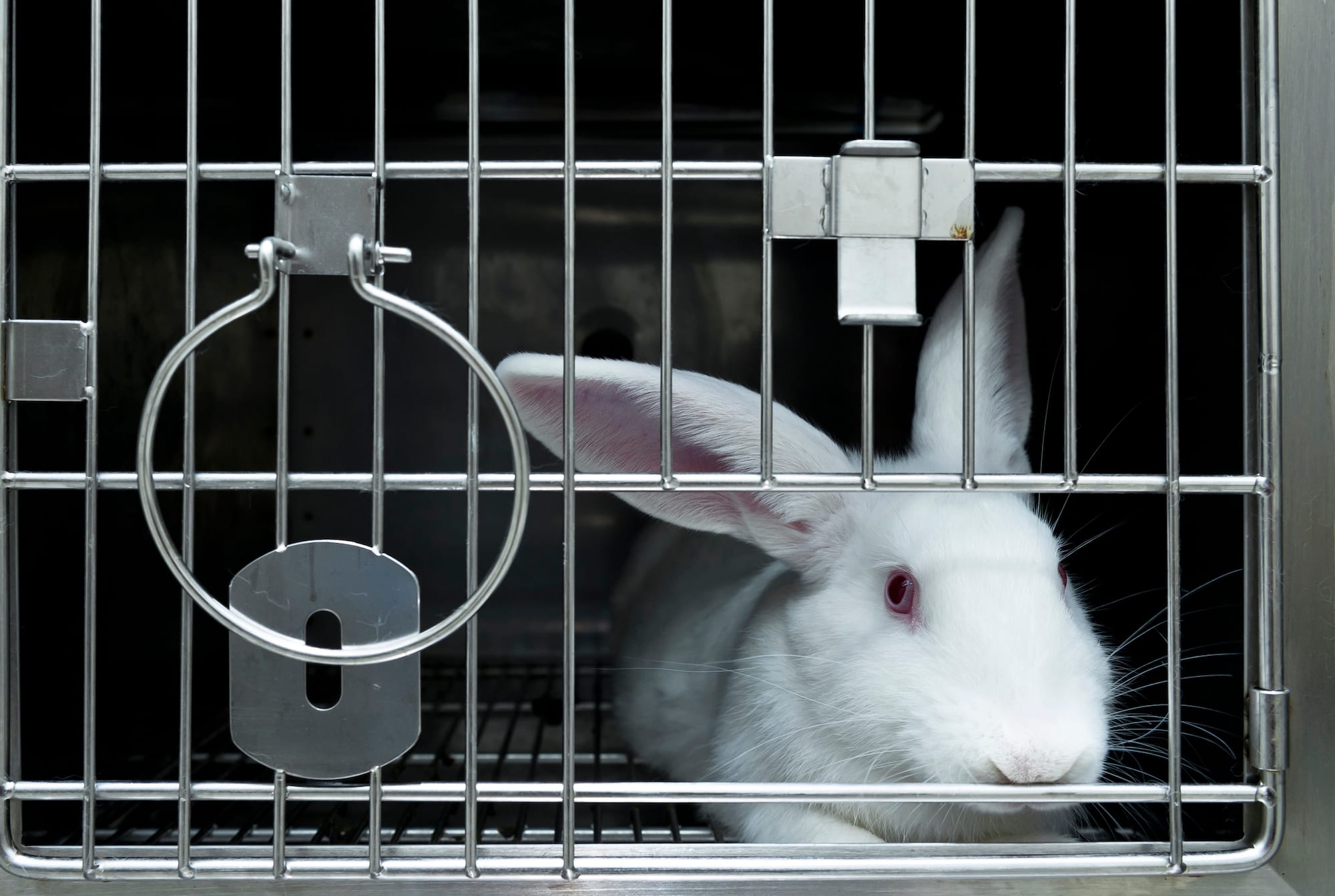Canada is one step closer to phasing out painful toxicity testing on animals—the most harmful use of animals in Canadian science. After years of advocacy by Animal Justice and a coalition of animal protection groups, Canada’s Parliament passed Bill S-5 in June 2023. This groundbreaking new law aims to reduce and replace the use of animals in toxicity testing of chemicals.
A key part of the new law is a requirement for Canada to develop a strategy to replace, reduce, and refine the use of vertebrate animals in toxicity testing. Progress on the strategy will be reported annually to Parliament, making it an important mechanism to ensure Canada stays on track to end toxicity testing on animals by 2035.
The Draft Strategy was released in September, and is open for public comment until November 13, 2024.
Toxicity Testing Causes Horrific Animal Suffering
Many toxicity tests fall into “Category E”—the most severe category of harm that animals can experience according to the Canadian Council on Animal Care (CCAC). These tests can involve forced ingestion followed by vomiting, forced inhalation causing throat and lung irritation and burning to animals restrained in inhalation chambers, and skin or eye irritation causing painful and itchy sores and rashes.
Once an experiment is done, the animals involved are generally killed. In 2019 alone, more than 90,000 animals were used in Category E toxicity tests. Animals commonly used include rabbits, guinea pigs, mice, birds, and even dogs.
Animals suffer and die in these tests even though non-animal methods (“NAMs”) are often more predictive of human health and environmental outcomes than traditional animal testing. They also tend to be more time- and cost-effective than methods using animals. Thankfully, non-animal testing methods—including cell and tissue tests, computer models, and other sophisticated methods—are becoming increasingly available.

Funding Needed To Develop Non-Animal Methods
While this important milestone is cause for celebration, public funding is urgently needed to support the shift away from animal testing and ensure Canada stays on track to end toxicity testing on animals once and for all. Unlike similar national centres in other G7 countries and in the EU (including in countries such as the US, UK, Japan, Brazil, and the Netherlands), Canada’s national centre dedicated to developing and validating non-animal methods has received no public funding to date, and is in the process of closing its doors.
The Canadian Centre for Alternatives to Animal Methods, which was located at the University of Windsor, was Canada’s only national hub and a key international interface—representing Canada, alongside Health Canada and Environment and Climate Change Canada in international consortia comprising similar centres from other nations.
Legislation, ethics, national strategic roadmaps, and scientific innovations are driving countries worldwide to adopt non-animal methods for toxicity testing. While Canada has lagged behind in the development of these methods, the passage of Bill S-5 marked an unprecedented and timely opportunity for Canada to shift to a global leadership role in 21st-century animal-free science. Now is the time for Canada to invest in cutting edge science and ensure this opportunity is not lost.
Take action now and tell Canada you support efforts to phase out toxicity testing on animals, and that you want to see funding allocated so that Canada can truly be a leader on the global stage when it comes to cutting edge, non-animal research methods.
